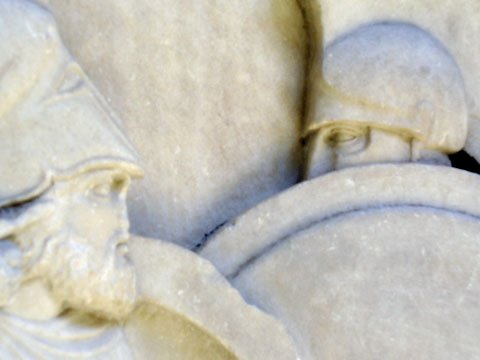
OK, it’s time to start catching up on my backlog of travel posts! The day after visiting Westminster Abbey, as it was a nice day I decided I’d go to Hampton Court Palace. Unfortunately it was too nice and I was sweating like a pig while standing in line at the ticket office at Waterloo, so I decided I couldn’t be bothered, went back to Russell Square (after a pointless detour to see how long the queues at the London Eye were) and instead went to the British Museum for a return visit.
Above: detail of a frieze on the Nereid Monument,1 showing two warriors face to face and shield to shield. (Despite thinking this sort of thing was really cool, I couldn’t stand to watch more than 10 minutes of 300 on the plane on the way home.)

Ramesses II smugly gazes into eternity. Well, not quite eternity, but he’s made it over 3200 years, which is not too bad.

Judging from my blurry photo of the caption, this has something to do with Tiglath-Pileser III, one of the great kings of Assyria in the 8th century BC. I don’t think it’s actually him, since the other representations I can find of him show a beard. Stylistically, it looks like other figures identified as courtiers.

A rare example of a Roman bronze statue, found in Egypt.

The aforementioned Nereid Monument. This was reconstructed from fragments found in Anatolia and was originally built by the Lykians in around 380 BC. It’s a royal tomb; the Nereids are the statues between the columns. Am I strange for liking this more than the Elgin Marbles?

Not that the Elgin Marbles weren’t impressive: this scene shows part of the eternal struggle between centaurs and humans.

The Trentham Lady, so-called because it stood for much of the 19th century overlooking the gardens at Trentham Hall in Shropshire, owned by the Duke of Sutherland. It may have been made in Greece originally, in the 2nd or 1st centuries BC, but was later re-used as a funerary statue for one Publia Maximina in the 1st century AD.

A line of Sakhmets, also known as the Avenger of Wrongs, the Scarlet Lady, Before Whom Evil Trembles, the Mistress of Dread, the Lady of Slaughter, and the Lady of Flame. She was an Egyptian warrior goddess, protector of the pharaohs. These ones are from Thebes, ca. 1400 BC.

This is Imdugud, a lion-headed eagle, from the Temple of Ninhursag near Ur in southern Iraq. It’s made from beaten copper over a wooden core, and is about 4500 years old. I’m continually amazed that such things still exist: ancient and fragile, beautiful and strange.

The first of three painted ladies: the sarcophagus of an Etruscan woman, Seianti Hanunia Tlesnasa, late 2nd century BC.

A fresco, probably of Phaedra and her attendant, probably from Pompeii. Since we can’t be sure of its original context, I suppose this has little value for historical research. But it sure is pretty.
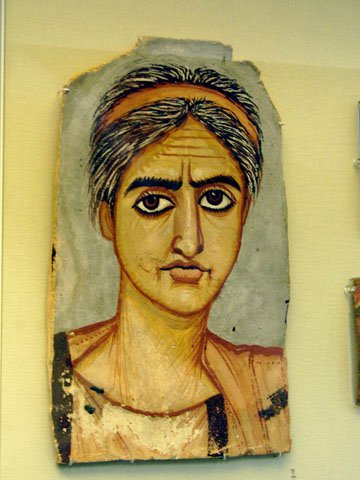
From her mummy, the face of a woman who died in Roman Egypt in the early 4th century AD. Hers is a face you could easily see walking down the street today. Such realistic portraits weren’t meant for human eyes, of course, but I wonder if those who loved her were tempted to keep it for themselves, to remember her by.
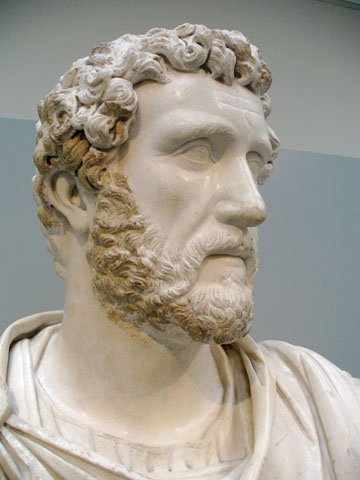
Antoninus Pius, the fourth of the Five Good Emperors. (Relatively speaking, of course.) Are those the remnants of the original paint job on his beard?

A tauroctony of Mithras — that is, the representation of Mithras slaying a bull which was the focus of every Mithraeum. This one is Roman and dates from the 2nd century AD but no other information was given.
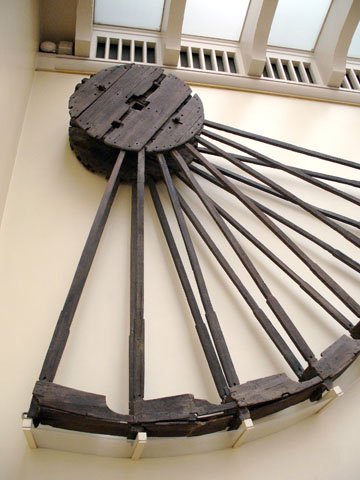
Now, statues and friezes are great and all, but this is the sort of thing I’d like to have seen more of! It’s part of a 1st or 2nd century AD Roman water wheel, recovered from a mine in Spain.

Sadly, I didn’t get to see the soldiers of the terracotta army, who arrived after I left London, but can’t complain when there were so many other treasures to see. Final picture: a Persian warrior.
![]() This work is licensed under a Creative Commons Attribution-NonCommercial-NoDerivatives 4.0 International License.
Permissions beyond the scope of this license may be available at http://airminded.org/copyright/.
This work is licensed under a Creative Commons Attribution-NonCommercial-NoDerivatives 4.0 International License.
Permissions beyond the scope of this license may be available at http://airminded.org/copyright/.
- Actually it might not have been part of the Monument itself; it was in the same room though. This is the problem with writing these posts two months after the event! [↩]



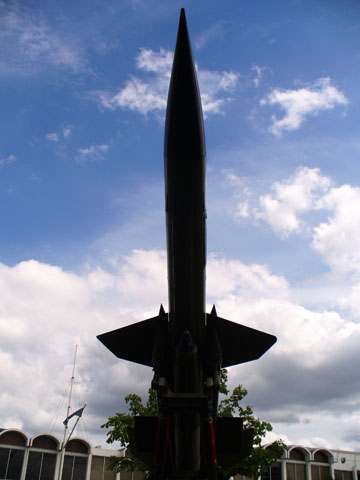
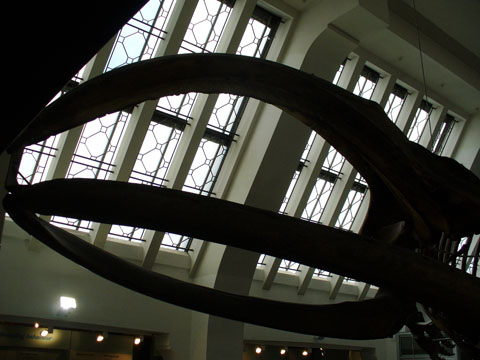

Worry not, that is part of the Nereid Monument, one of the side panels from the lower frieze.
Thanks Tony, it’s handy having a classicist as a reader :)
I’d agree with you about the Nereid monument being much more interesting than the Elgin marbles. I also prefer the Bassae frieze to the Parthenon frieze, because it’s presented so much better. The way the Elgin marbles are presented, chopped up and in isolation, misses much of the point of the frieze, but that’s me being obsessed by context again. :)
I don’t think I saw the Bassae frieze! I may have managed to miss it while wending my way around, or it might have been in one of the closed galleries.
I think that’s pretty much why I liked the Nereid Monument more; I could get much more of a sense of how they would have looked originally. Of course that’s very difficult to do with something as extensive as the Elgin Marbles, unless perhaps they were returned to the Parthenon — something I’m happy to let the British Museum do now that I’ve seen them there! :)
You say
“Not that the Elgin Marbles weren’t impressive: this scene shows part of the eternal struggle between centaurs and humans.”
The centaurs are believed to represent Greek’s fight against outside aggressors like Persia according to the Director of the British Museum
That makes sense, but centaurs are more fun.
The Mithras image is CIMRM 592, in Vermaseren’s catalogue of the monuments of Mithras.
Thanks!